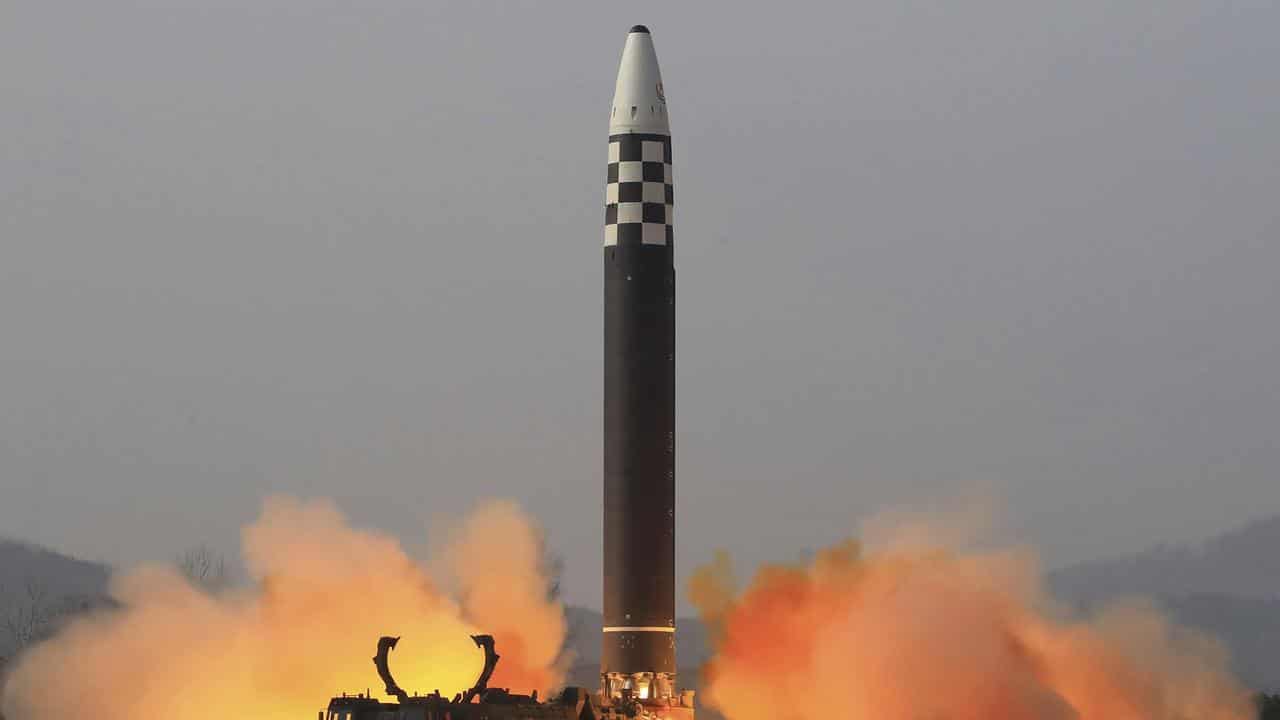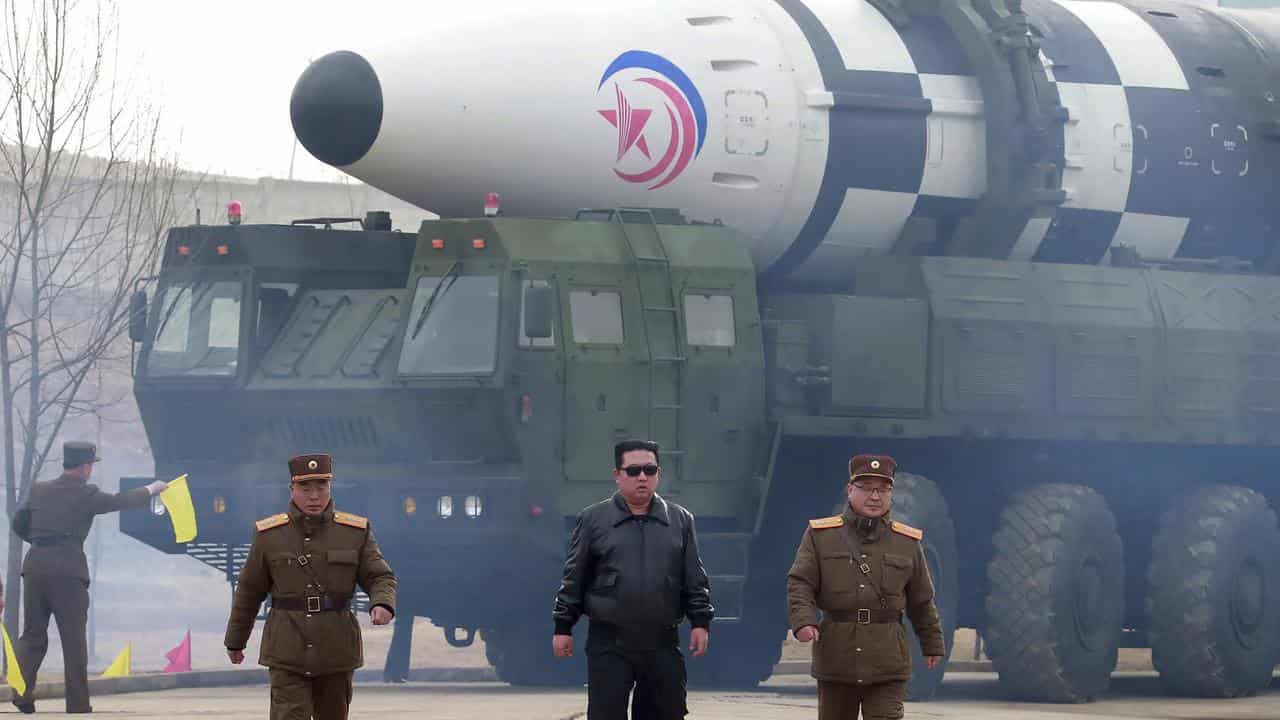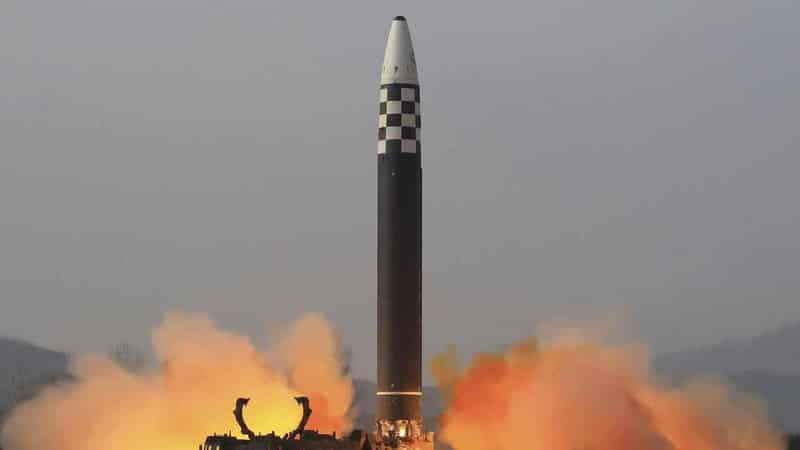
North Korea has launched a new intercontinental ballistic missile Thursday in its first test in almost a year of a weapon designed to threaten the US mainland and occurring days ahead of the US election.
North Korean leader Kim Jong-un ordered the missile test and was at the launch site, calling the launch “an appropriate military action” to show North Korea’s resolve to respond to its enemies’ moves that has threatened the North’s safety, according to its defence ministry.
The United States, South Korea and Japan had also identified the weapon as an ICBM and condemned the launch as raising tensions.
The launch on Thursday came as Washington warned that North Korean troops in Russian uniforms are heading toward Ukraine, likely to augment Russian forces and join the war.
North Korea confirmed the launch hours after its neighbours detected the firing of what they suspected was a new, more agile weapon targeting the mainland US.
The statement was unusually quick since North Korea usually describes its weapons tests a day after they occur.
“I affirm that the DPRK will never change its line of bolstering up its nuclear forces,” Kim said, according to a North Korean defence ministry statement carried by state media, using the abbreviation for North Korea's official name.
South Korea's Joint Chiefs of Staff said North Korea could have tested a new, solid-fuelled long-range ballistic missile, which are easier to move and hide and can be launched quicker than liquid-propellant weapons.

Joint Chiefs spokesman Lee Sung-joon said the launch was possibly timed to the US election in an attempt to strengthen North Korea's future bargaining power.
He said the North Korean missile was launched on a high angle, apparently to avoid neighbouring countries.
Japanese Defence Minister Gen Nakatani told reporters the missile's flight duration of 86 minutes and its maximum altitude of more than 7000km exceeded corresponding data from previous North Korean missile tests.
KCNA said the flight characteristics of this launch exceeded those registered for its previous missile launches.
US National Security Council spokesman Sean Savett called the launch “a flagrant violation” of UN Security Council resolutions that “needlessly raises tensions and risks destabilising the security situation in the region”.
Savett said the US would take all necessary measures to ensure the security of the American homeland and its South Korean and Japanese allies.
South Korea and Japan condemned the North Korean launch for posing a threat to international peace and they said they were closely co-ordinating with the US over the test.
Lee said South Korea and the US planned “sufficient” bilateral military exercises and trilateral ones involving Japan in response to North Korean threats.
North Korea has made strides in its missile technologies in recent years, but many foreign experts believe the country has yet to acquire a functioning nuclear-armed missile that can strike the US mainland.
They say North Korea likely possesses short-range missiles that can deliver nuclear strikes across all of South Korea.
One of the technological hurdles North Korea still faces is for its weapons to be capable of surviving the harsh conditions of atmospheric re-entry.
South Korean officials and experts earlier said North Korea might test-launch a ICBM on a normal angle to verify that capability.
South Korea’s military intelligence agency told MPs on Wednesday that North Korea was close to test-firing a long-range missile capable of reaching the United States and has also likely completed preparations for its seventh nuclear test.
North Korea last test-fired an intercontinental ballistic missile in December 2023, when it launched the solid-fuelled Hwasong-18.
In the past two years, Kim has used Russia’s invasion of Ukraine as a window to ramp up weapons tests and threats while also expanding military co-operation with Moscow.
South Korea, the US and others have recently accused North Korea of dispatching thousands of troops to support Russia’s war-fighting against Ukraine, after already shipping artillery, missiles and other conventional arms to Russia.









